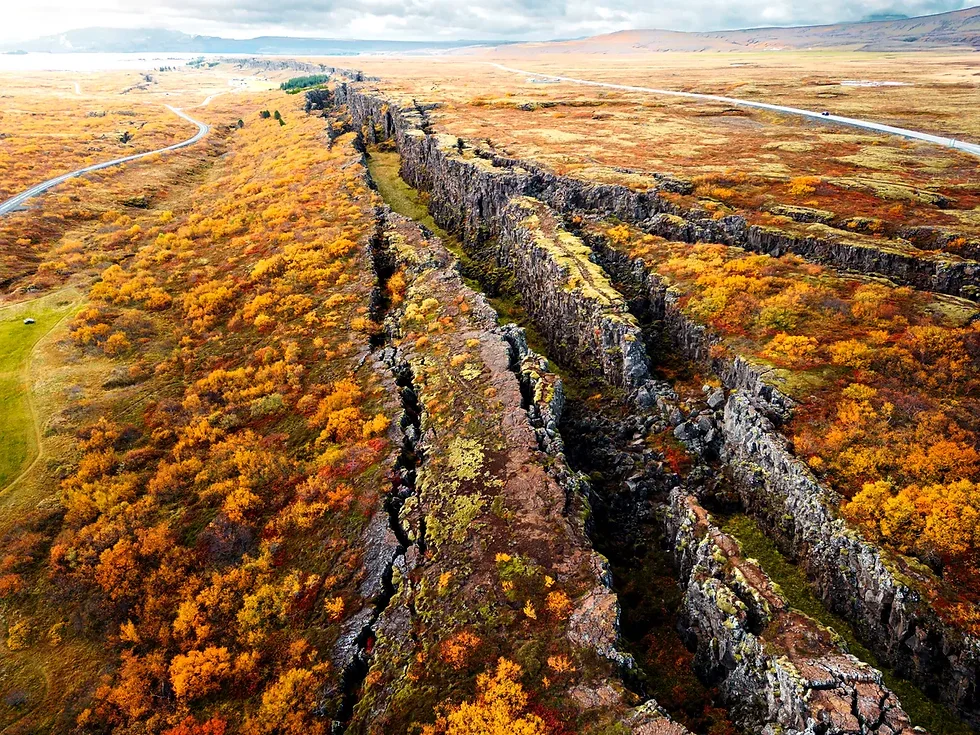Iceland: A Land Shaped by Fire and Ice – Exploring the Mid-Atlantic Ridge
Iceland, the “Land of Fire and Ice,” captivates with its dramatic landscapes, powerful glaciers, and volcanic activity. But what lies beneath this geologically fascinating island? The answer lies in a fiery phenomenon – a divergent plate boundary known as the Mid-Atlantic Ridge.
A Rift Between Two Worlds:
The Mid-Atlantic Ridge is a massive underwater mountain range that snakes its way through the Atlantic Ocean, splitting the Eurasian and North American tectonic plates. Iceland sits astride this ridge, making it a land literally divided by two continents.
The Power of Divergence:
The Mid-Atlantic Ridge is a divergent plate boundary, meaning the Eurasian and North American plates are constantly moving away from each other. This movement creates a zone of upwelling magma (molten rock) from the Earth’s mantle. As the magma rises and cools, it solidifies, forming new oceanic crust and pushing the continents further apart.
Iceland’s Birthplace:
This ongoing process of seafloor spreading is the very reason Iceland exists. Millions of years ago, volcanic eruptions spewing from the Mid-Atlantic Ridge gradually built up the island, pushing it above sea level. Iceland continues to grow larger as the plates diverge, with volcanic activity adding new landmass at a rate of a few centimeters per year.
A Land of Fire and Ice:
Iceland’s location on the Mid-Atlantic Ridge makes it a hotspot for geological wonders. The island boasts numerous active volcanoes, including the infamous Eyjafjallajökull, which caused travel disruptions in 2010. Glaciers, remnants of the last ice age, coexist with volcanic activity, creating a landscape of stark contrasts – fire and ice in a constant dance.
Exploring Iceland’s Geological Marvels:
A trip to Iceland offers a chance to witness the power of plate tectonics firsthand. Visit Thingvellir National Park, a UNESCO World Heritage Site, where you can see the rift valley marking the physical separation of the Eurasian and North American plates. Hike on a glacier or marvel at the geothermal wonders like the Blue Lagoon, all testaments to Iceland’s fiery origins.
Iceland: A Geological Gem:
Iceland’s unique location on the Mid-Atlantic Ridge shapes its dramatic landscapes and volcanic activity. Understanding this plate boundary is key to appreciating the island’s geological marvels. So, on your next adventure to Iceland, look beyond the breathtaking scenery – beneath your feet lies a powerful force that continues to shape this land of fire and ice.
Beyond the Mid-Atlantic Ridge: Iceland’s Geologic Tapestry
The Mid-Atlantic Ridge plays a starring role in Iceland’s geological story, but it’s not the only act. This volcanic island boasts a complex geological makeup, influenced by several factors:
-
Mantle Plume: In addition to the divergent plate boundary, Iceland sits atop a mantle plume, a hot upwelling of molten rock from deep within the Earth’s mantle. This plume contributes to the island’s intense volcanic activity, further fueling eruptions and shaping the landscape.
-
Hotspots and Rift Zones: The interaction between the Mid-Atlantic Ridge and the mantle plume creates a complex network of hotspots (areas of concentrated volcanic activity) and rift zones (areas where the plates are pulling apart) across Iceland. This intricate interplay results in diverse volcanic features, from shield volcanoes with gentle slopes to explosive stratovolcanoes.
-
Glacial Activity: Iceland’s dramatic landscapes are not just shaped by fire, but also by ice. The island is covered by massive ice sheets, remnants of the last ice age. These glaciers carve valleys, reshape coastlines, and leave behind glacial deposits like moraines and sandurs.
-
Unique Rock Formations: Iceland’s volcanic and glacial activity has resulted in a fascinating array of rock formations. Explore black sand beaches formed by volcanic ash, witness the multicolored rhyolite (volcanic rock) formations in Landmannalaugar, or marvel at the dramatic basalt columns of Reynisdrangar sea stacks.
Understanding Iceland’s Geological Future
The ongoing divergence of the Mid-Atlantic Ridge and the persistent mantle plume ensure Iceland’s geological story is far from over. Volcanic eruptions, glacial retreat, and ongoing plate movement will continue to shape the island’s landscape for millions of years to come.
-
Volcanic Activity: With numerous active volcanoes and a persistent mantle plume, Iceland is likely to experience continued volcanic eruptions. While some eruptions can be disruptive, they also contribute to the island’s unique character and geothermal wonders.
-
Glacial Retreat: Due to climate change, Iceland’s glaciers are retreating at an alarming rate. This will reshape the island’s landscape, revealing areas previously covered in ice and potentially leading to increased volcanic activity.
-
Evolving Plate Boundary: The Mid-Atlantic Ridge will continue to spread, widening the gap between the Eurasian and North American plates. This ongoing process may lead to further volcanic activity and potentially a shift in Iceland’s position relative to the continents.

